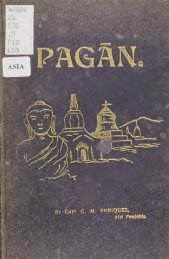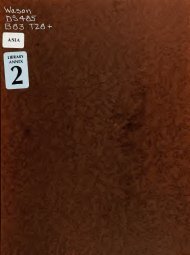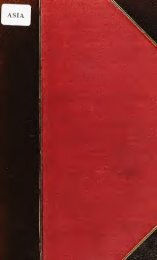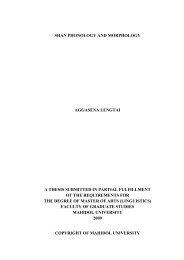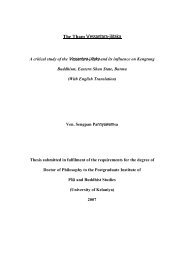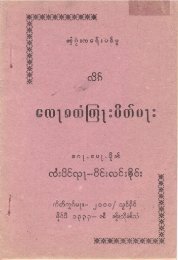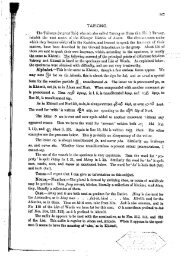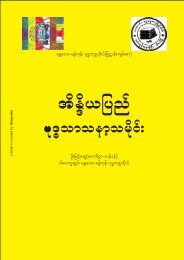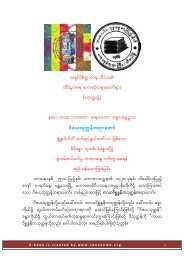The Tai Ahom National Council Memo Scheduling
The Tai Ahom National Council Memo Scheduling
The Tai Ahom National Council Memo Scheduling
You also want an ePaper? Increase the reach of your titles
YUMPU automatically turns print PDFs into web optimized ePapers that Google loves.
“<strong>The</strong> venerable (Deodhais and Bailongs) men were required to consult the omens, by<br />
studying the way in which a dying fowl crossed his legs, a system of divination which is<br />
in vogue amongst many of the hill tribes of Assam to the present day”. (Assam District<br />
Gazetteer, Nowgong, p. 5).<br />
P.R. T. Gurdon witnessed a divination by chicken-bone and he gives a description of it.<br />
“Some Deodhai near Luckwa (in Sibsagar district) once performed the divination ceremony for<br />
the writer’s benefit. It was as follows. An altar of plantain trees and bamboos was set up<br />
(mehenga); plantain leaves and fruit, rice, sugar-cane, and liquor (lau) were brought, and a lamp.<br />
Three fowls and three fowls’ eggs were placed upon the altar. <strong>The</strong> officiating priest sprinkled<br />
holy water on the spectators with a spring of blak singpha (the King flower). Prayers were then<br />
offered up to Jasingpha (the god of learning), and the fowls’ necks were wrung. <strong>The</strong> flesh was<br />
scraped off the fowls’ legs until the latter were quite clean, and then search was made for any<br />
small holes that existed in the bones. When the holes were found, small splinters of bamboo were<br />
inserted in them; and the bones were held up, with the bamboo splinters sticking in them, and<br />
closely compared with diagrams in a holy book which the priest had ready at hand. This book<br />
contained diagrams of all sorts of combinations of positions of splinters stuck in fowls’ legs, and<br />
each meant something, the meaning appearing in verses written in the <strong>Ahom</strong> character, which<br />
were duly droned out by the Deodhai.” (Encyclopaedia of Religion & Ethics, Vol. I, 1959, p.<br />
236). Such divination is till prevalent among them.<br />
(d) Communal Worship of <strong>Ahom</strong> Gods:<br />
Om-Pha is the grand worship of all gods and spirits. <strong>The</strong> <strong>Ahom</strong>s continued to worship<br />
their gods and spirits throughout the period of <strong>Ahom</strong> rule. Even after the loss of political power<br />
by them, they continued, particularly by the <strong>Ahom</strong> priests to perform worship, though in a much<br />
reduced scale. But it never ceased to exist.<br />
Maheswar Neog, a great literary figure and reputed scholar remarks “Ompha at Lakuwa<br />
Dewhal has been performed in a grand style every ten years since the time of king Purandar<br />
Singha, 1833-38” (Pabitra Asam, Assam Sahitya Sabha, 1991, pp. 45-46). At the present time,<br />
this grand worship is done on an auspicious day every twelfth year when all gods are propitiated<br />
at the same place on that day. This is called Om-Pha Puja.<br />
In 1829, Haliram Dhekial Phukan wrote “ahom kachari lalung mikir prabhriti<br />
parbatiya jatiyera asurik mate chungdeo puja kare” (the hill tribes like the <strong>Ahom</strong>, Kachari,




